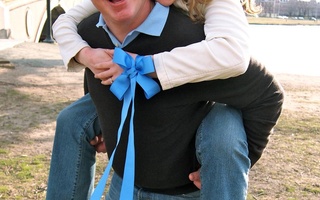In the middle of the week, in the middle of the day, in the middle of Harvard Yard, a small group of elderly men and women gathered by the John Harvard statue to begin their weekly Harvard-Cambridge Walk for Peace.
Making their way through the Yard, they held high signs describing hopes and wishes for the war in Afghanistan to finally come to an end.
“The University aids us to be interested [in the war], to take part in counter measures which is what us geezers are doing here today,” said Kenneth Matthews, one of the walkers.
The idea of a peace walk began with three Cambridge women, two of whom still participate in the walks today, who held a vigil at the Harvard Graduate School of Education on September 20, 2001.
“We had a bad feeling about how the Bush administration was going to react towards 9/11,” said Jane Collins, one of the original walkers.
Though Collins said that the founders continued to feel concern, in the years following they decreased their activity until the arrival of Steven B. Bloomfield, Executive Director of the Weatherhead Center for International Affairs, who began Harvard-Cambridge Walk for Peace in May 2004.
“After the revelations of the prisoner abuse and torture that took place at the Abu Ghraib prison, I thought it was essential that people at Harvard react to what was begin perpetrated in the name of US citizens,” Bloomfield said.
Bloomfield reached out to the community and the walks have continued for the last six years—even without his involvement. Bloomfield said he ended his involvement when President Barack Obama was elected in order to provide the new president a chance to prove his commitment to peace in Afghanistan and Iraq.
But these self-proclaimed “geezers” continue to show their dedication to the cause of peace. According to the group, the same five or six people repeatedly gather to make the walk every Wednesday afternoon in the middle of the Yard, remaining true to Bloomfield’s idea of meeting in the middle.
“I thought it would symbolize the centrality of the issue to our lives and the kind of meaning we should invest in it,” Bloomfield explained.
The walkers have received a range of attention, from being ignored to positive reinforcement. However, at the end of every walk, they wonder where the students are.
After all, if the war goes on, more young people are going to be needed to fight it, Matthews said.
All the members of the group who walked yesterday added that they want to see students engage with them, to join and demonstrate with them, and to remember the wars in Iraq and Afghanistan.
“A lot of what we are trying to do is just remind people that people are still fighting and dying and killing, and something is still going on,” Collins said. “It does not make any more sense than it did when [George] W. [Bush] started these wars.”
Read more in News
Crimson Cash Expands OfferingsRecommended Articles
-
DISSENT: Presidential Power“The question we have to ask is who has done the most in the previous year to enhance peace in ...
-
Nigeria Crux for African PeaceNigerian Ambassador Adebowale I. Adefuye said that Nigeria is the key to establishing peace and stability in Africa during a talk at the Barker Center yesterday.
-
 Stephanie M. Cole '11 and Andrew W. Peace
Stephanie M. Cole '11 and Andrew W. Peace -
 Peace Walk
Peace Walk -
Past Cases May Shed Light on 'Introduction to Congress" InvestigationLarge-scale cheating scandals at the University of Virginia, the U.S. Naval Academy, and Dartmouth may offer insight into the approach Harvard may take in doling out punishments to students found guilty of academic dishonesty in Government 1310: “Introduction to Congress.”
-
Peace in Palestine No Longer PossibleIn the coming decades, observers will ask themselves how the region slid from the promise of the Oslo Accords to these lows. They may discover that this last month’s events were the watershed moment when both sides committed their next generation of youth to the never-ending conflict.













